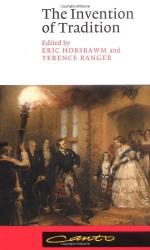|
This section contains 839 words (approx. 3 pages at 400 words per page) |

|
Chapter 5, Representing Authority in Victorian India Summary and Analysis
By the middle of the nineteenth century, India was divided between the small ruling class composed of the British or those who emulated British culture and the quarter of a billion Indians who were ruled. The British turned themselves into 'insiders' by giving their monarch sovereignty over India. The Queen now had Indian subjects. The Indian people gained the rights of the British, at least in theory. Many saw the integration as a cultural statement about maintaining India as both a feudal order and changing it such that the old order would be destroyed. The colonial government saw itself as having the sole right to rule but this involved creating a secured and usable past. The incorporation of India was thus made official through a ceremony that was used to produce...
(read more from the Chapter 5, Representing Authority in Victorian India Summary)
|
This section contains 839 words (approx. 3 pages at 400 words per page) |

|




